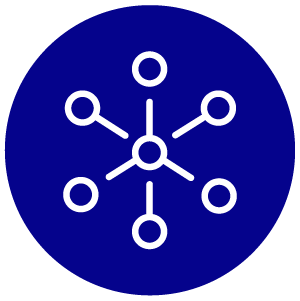
Isolating Rare Cell Types From Peripheral Blood
Leukopaks from patients provide large pools of PBMCs.
![]()
CHALLENGE
Standard blood draws from patients with chronic viral infections often fail to yield sufficient quantities of rare immune cells harboring viral genetic material.
![]()
SOLUTION
Recruit 20 Sanguine Patient Community participants with confirmed chronic viral infection to donate via apheresis, thereby safely isolating ~100x more PBMCs in one sitting compared to a standard blood draw.

OUTCOME
Disease-state leukopaks can more confidently provide sufficient quantities of rare cells for isolation and analysis, whereas standard blood draws the risk yielding inadequate material.
Identifying and isolating rare cells for therapy development
While white blood cells comprise only about 1% of peripheral blood cells, target subtypes to be isolated, studied, edited, and expanded in support of novel therapy development circulate in abundance orders of magnitude less frequently. A standard 180 mL blood draw typically yields ~100 million peripheral blood mononuclear cells (PBMCs). Considering a rare immune cell subtype of 0.1% abundance, such a biospecimen would yield only ~10 thousand cells.
In HIV-infected patients, a minute subset of resting CD4+ cells harboring HIV genetic material serves as a latent viral reservoir that can be subsequently activated, resulting in persistent infection.1 Therefore, antiretroviral therapies (ARTs) are not considered curative treatments for HIV, even though they enable patients to live viremia-free with HIV below detection limits for years.2 For companies and research groups developing potentially curative antiviral therapies, isolating and studying persistent cells harboring integrated HIV DNA represent key research initiatives. Such cells rarely occur in circulation, with frequencies of two or less per 100 million peripheral blood mononuclear cells, depending on the stage of infection.3
Antigen-specific immune cells, including T and B cells, represent additional rare target cell types being investigated as curative strategies for several viral infections as standalone or co-treatments with ARTs. For example, dysfunctional B cells that fail to produce neutralizing antibodies against the hepatitis B surface antigen (HBsAg) are thought to contribute to chronic hepatitis B infection, thus, immunotherapeutic strategies for restoring HBsAg-specific B cell activity are being explored.4,5
Leukopaks safely provide ~100 times more PBMCs than blood draws for isolating rare cells
Client:
Investigator at a biopharmaceutical company working on curative therapies for a chronic viral infection.
Request:
20 disease-state leukopaks collected among Sanguine’s patient community, each with a confirmed diagnosis of the chronic viral infection under investigation (Figure 1).
Outcome:
The investigator’s team focuses on early-stage discovery and characterization of immune cell subtypes harboring viral genetic material, which occurs in minute quantities in chronically-infected patients. Before working with Sanguine to procure leukopaks from patients with confirmed disease, the team relied on PBMCs isolated from standard blood draws of chronically-infected patients. To obtain enough cellular material, the team needed several such PBMC donations to conduct functional cell assays and other discovery work. Since leukopaks are PBMC-enriched biospecimens safely collected from patients under IRB-approved protocols, each product provides approximately the equivalent number of PBMCs to 100 standard blood draws from a single donor.
According to the investigator, the disease-state leukopak from Sanguine “represents a unique biospecimen type that solves a major issue for us– procuring an adequate number of cells from disease-state donors to isolate the rare cell types that we need.”
Figure 1. Workflow diagram showing how leukopaks are collected from Sanguine’s patient community, processed, and delivered as requested.
Are you interested in learning more about how leukopaks can accelerate your research?
References
1Cohn, L.B., Chomont N., & Deeks S.G.. The Biology of the HIV-1 Latent Reservoir and Implications for Cure Strategies. Cell Host Microbe. 27(4), 519–530 (2020).
2Jacobs J.L., et al. Persistent HIV-1 Viremia on Antiretroviral Therapy: Measurement and Mechanisms. Front Microbiol. 10, 2383 (2019).
3Leyre L. et al. Abundant HIV-infected cells in blood and tissues are rapidly cleared upon ART initiation during acute HIV infection. Sci Trans Med. 12(533), eaav3491 (2020).
4Neumann-Haefelin C, Thimme R. Entering the spotlight: hepatitis B surface antigen-specific B cells. J Clin Invest. 128(10), 4257-4259 (2018).
5Dusheiko G., et al. New approaches to chronic hepatitis B. New Engl J Med. 388, 55–69 (2023).
